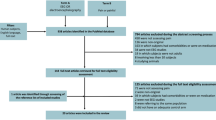Abstract.
Redox modulation has been recognized to be an important mechanism of regulation for the N-methyl-d-aspartate (NMDA) receptor. Sulfhydryl reducing agents enhance, whereas oxidizing agents decrease, NMDA-evoked currents. Multiple cysteine residues located in different NMDA receptor subunits have been identified as molecular determinants underlying redox modulation. The NMDA receptor is also regulated by nitric oxide (NO)-related species directly, not involving cyclic GMP, but the molecular mechanism of this action has heretofore not been entirely clear. The confusion arose at least partly due to the fact that various redox forms of NO (NO+, NO•, NO−, each having an additional electron compared with the previous) have distinct mechanisms of action. Recently, a critical cysteine residue (Cys 399) on the NR2A subunit has been shown to react under physiological conditions with NO by S-nitrosylation (transfer of the NO+ to cysteine thiol) or by reaction with NO− (nitroxyl anion) to underlie this form of modulation.
Similar content being viewed by others
Author information
Authors and Affiliations
Rights and permissions
About this article
Cite this article
Choi, YB., Lipton, S. Redox modulation of the NMDA receptor. CMLS, Cell. Mol. Life Sci. 57, 1535–1541 (2000). https://doi.org/10.1007/PL00000638
Issue Date:
DOI: https://doi.org/10.1007/PL00000638




